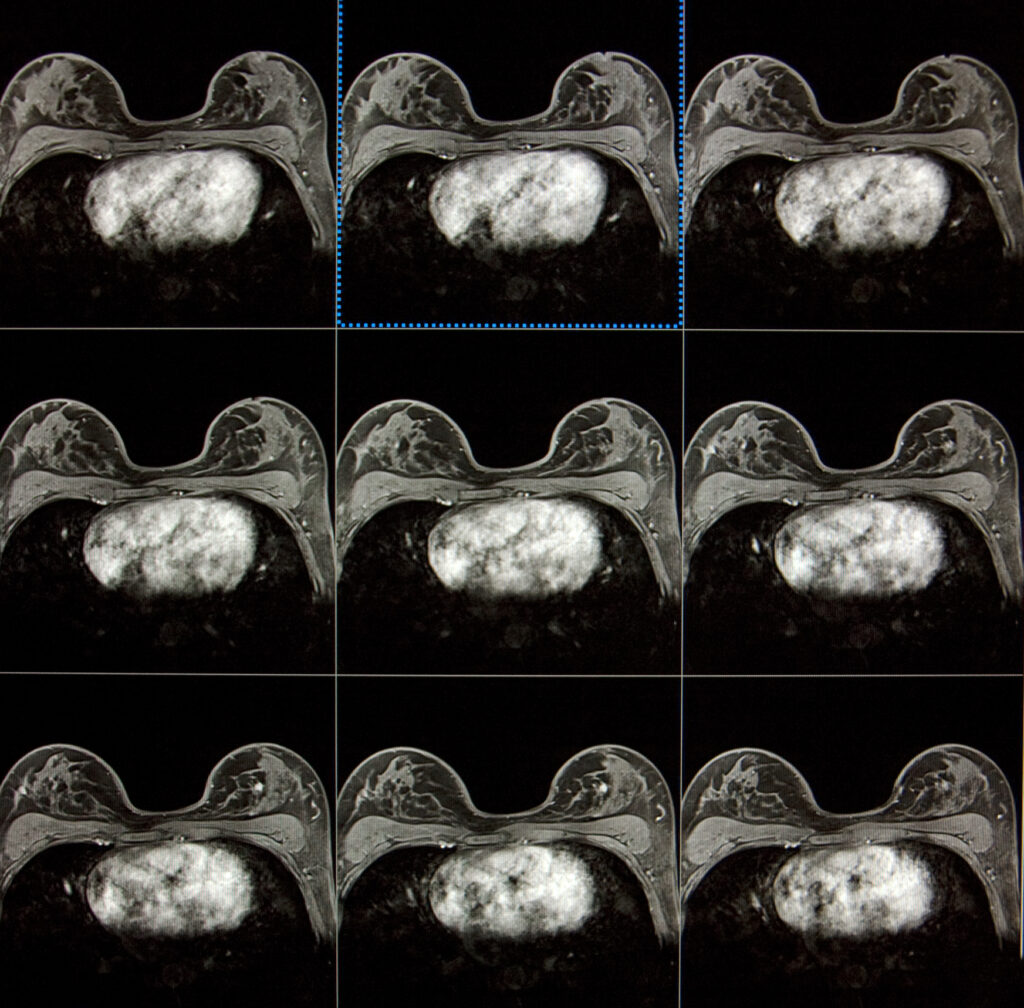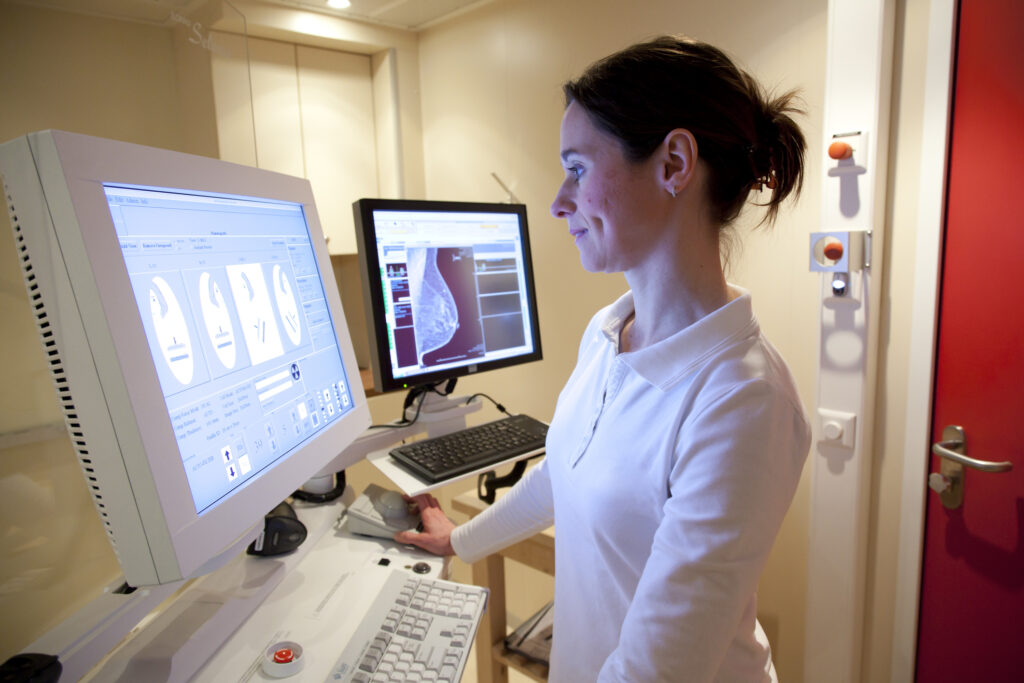Digital Breast Tomosynthesis
Digital Breast Tomosynthesis (DBT) is an imaging modality that allows a volumetric reconstruction of the whole breast. This breast screening technique involves using 2-D projections of low-dose X-rays positioned at different angles to produce the image. In digital breast tomosynthesis, the X-ray tube makes an arc, delivering a radiation dose equivalent to a fraction of a standard mammogram. During the acquisition, a set of digital projections are obtained regarding structural information and this raw data is sent to a computer terminal.
Computation of the raw data involves using reconstruction algorithms of the projection values comparable to conventional tomography. However, tomosynthesis does not provide direct projection images but reconstructed images of individual layers, which aim to remove from the reconstructed slice the upper and lower layers of structured noise. The reconstruction algorithms used in the first generation of devices include the FBP (Filtered Back Projection) algorithm, which is ideal for circular computed tomography acquisitions for reconstruction and breast screening.
This approach was not optimal in digital breast tomosynthesis reconstruction, which is subjected to noise and artefacts. Digital breast tomosynthesis allows the detection of more lesions and improved morphological analysis of masses and architectural distortions. This is because the contrast is greater than the background, which can mark out the masking of lesions caused by the superimposition of normal structures.
Therefore, separating different layers should reduce the number of false negatives or false positives due to overlapping. The advantages of DBT are that the operator requires no intensive training and that the breast is positioned similarly to conventional mammography.
Also, digital breast tomosynthesis systems are used in the MLO projection mode with an acquisition time between 10-20 seconds. In addition, the volumetric reconstruction time is between 40-180 seconds with a 1 mm slice thickness. The display mode can format standard mammograms and real-time FFDM/DBT with breast compression in place.
You are here:
home » digital breast tomosynthesis



